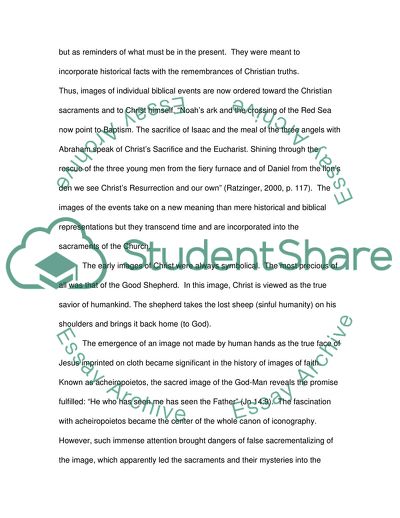Cite this document
(Summary of the third part - Art and Liturgy, of the book - The Spirit Literature review Example | Topics and Well Written Essays - 1250 words, n.d.)
Summary of the third part - Art and Liturgy, of the book - The Spirit Literature review Example | Topics and Well Written Essays - 1250 words. https://studentshare.org/religion-and-theology/1732723-summary-of-the-third-part-art-and-liturgy-of-the-book-the-spirit-of-the-liturgy-written-by-joseph-cardinal-ratzinger
Summary of the third part - Art and Liturgy, of the book - The Spirit Literature review Example | Topics and Well Written Essays - 1250 words. https://studentshare.org/religion-and-theology/1732723-summary-of-the-third-part-art-and-liturgy-of-the-book-the-spirit-of-the-liturgy-written-by-joseph-cardinal-ratzinger
(Summary of the Third Part - Art and Liturgy, of the Book - The Spirit Literature Review Example | Topics and Well Written Essays - 1250 Words)
Summary of the Third Part - Art and Liturgy, of the Book - The Spirit Literature Review Example | Topics and Well Written Essays - 1250 Words. https://studentshare.org/religion-and-theology/1732723-summary-of-the-third-part-art-and-liturgy-of-the-book-the-spirit-of-the-liturgy-written-by-joseph-cardinal-ratzinger.
Summary of the Third Part - Art and Liturgy, of the Book - The Spirit Literature Review Example | Topics and Well Written Essays - 1250 Words. https://studentshare.org/religion-and-theology/1732723-summary-of-the-third-part-art-and-liturgy-of-the-book-the-spirit-of-the-liturgy-written-by-joseph-cardinal-ratzinger.
“Summary of the Third Part - Art and Liturgy, of the Book - The Spirit Literature Review Example | Topics and Well Written Essays - 1250 Words”. https://studentshare.org/religion-and-theology/1732723-summary-of-the-third-part-art-and-liturgy-of-the-book-the-spirit-of-the-liturgy-written-by-joseph-cardinal-ratzinger.


